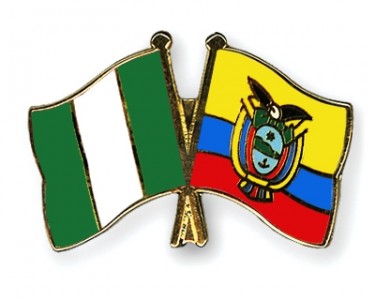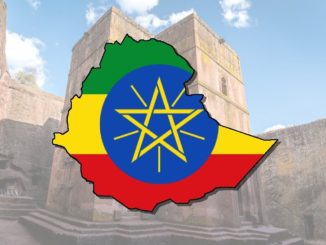
Nigeria and Ecuador has just signed a visa-free pact to strengthen bilateral relations. This will help boost tourism and businesses between the two countries. Let’s note that all Africans can travel to Ecuador except for Eritrea, Ethiopia, Kenya and Senegal which requires visa for entry into the South American country.
Ecuadorian Ambassador to Nigeria, Deopoldo Rovayo, made the announcement in Abuja when he paid a courtesy visit to the Permanent Secretary, Ministry of Foreign Affairs, Ambassador Olukunle Bamgbose.
The envoy said, “The purpose of my visit is to further cement the bilateral relations between Ecuador and Nigeria.
“The two countries have agreed to sign an agreement to enable our citizens to visit one another without a visa. There are approximately about one thousand Nigerians living in Ecuador and the number would continue to rise.”
With the following agreement, it is expected that there will be influx of tourists from both countries. Anyone from Nigeria or anywhere in the world visiting Ecuador should know the following first – as noted by CNN Travel below.
When people think Ecuador they think the Galapagos and while those enchanted islands are incredible there’s a lot more to this Andean country.
Adventure seekers will love the active volcanoes, Romeos will make the most of the cheap red roses and fine chocolate and anyone with a sense of the fun won’t want to miss the chance to stand astride the hemispheres with one foot planted on either side of the equator.
- ‘Middle’ monument is in the wrong place
Ecuador is named after the equator that runs through the country. One of the must-do tourist attractions is to stand astride the line that marks the middle of the world — just make sure you pick the right spot.
The “Mitad del Mundo” monument was built in 1979. It’s an impressive 100-foot statue about 15 miles outside Quito and has a bold yellow line supposedly marking the line of zero degrees latitude. The only problem is that it’s actually 240 meters off. We know this thanks to accurate GPS readings that many of us carry around in out pockets.
A new tourist site has been created, this one with a red line that marks the planet in two and a sign that proudly declares: “Latitude: 00º 00′ 00” calculated with G.P.S. Meanwhile, you can get to another Latitude: 00º 00′ 00 in Uganda.
- Coca leaves — a great cure for altitude sickness
Quito is at 2,800 meters above sea level and it’s not uncommon to feel short of breath or have a mild headache when you first arrive. Symptoms of altitude sickness can be worse if you head higher into the Andean mountains without acclimatizing. Drinking plenty of water and avoiding alcohol and caffeine would ease the symptoms. And Diamox works well, but takes two days to kick in. Coca leaves — sold in small neighborhood stalls — are a useful quick fix, as is coca tea. Just remember to ditch any coca leaves before you fly home — it’s illegal to bring them into the United States and many other countries – but am not it is in Nigeria.
- Roasted guinea pigs are a delicacy
Known in the local Kichwa language as cuy, the furry little creatures are flattened and roasted whole over an open fire. You won’t find them on every restaurant menu in Quito. This is a premium priced specialty dish served in only a handful of the capital’s eateries and in the countryside. A whole roasted guinea pig costs about $20-$25. It has a gamey flavor not unlike rabbit and is usually served with potatoes and corn. Cuy are so highly prized that a mating pair is considered a valuable wedding present in the countryside.
- World’s largest exporter of fine cacao beans
Much like wine, chocolate reflects the terroir or flavors of the region where it’s grown. Ecuador’s diversity of terrain, rich volcanic soil and location on the equator make for fine growing conditions. Plant the same Arriba bean in Ecuador and Africa and the Ecuadorian cacao will have a more complex, refined taste. As the demand for more flavorful chocolate has risen, so Ecuador has become a hot destination for chocolatiers and tour operators are getting in on the act.
- Roses are cheap
It costs $2.50 for 25 long-stemmed red roses. Direct from the greenhouses, 25 can be grabbed for as little as $2 — making it cheap for anyone to be a Valentino. The rose industry only started about 20 years ago, but within a decade it was third only to oil and bananas. With ideal rose-growing conditions, Ecuador is also ahead of the game in terms of producing new varieties.
- This is a land of volcanoes
Ecuador sits on the so-called “Ring of Fire” on the edge of a very active tectonic plate. Just south of Quito two parallel chain of Andes that cross Ecuador from north to south rise in dramatic peaks. This stretch of summits is known as “The Avenue of the Volcanoes” and it’s worth getting a window seat as you take off from the capital to witness the spectacle of the snow-capped volcanoes. Tungurahua just south of Quito has been one of the most active volcanoes on the planet for the last few years.
In Kichwa its name translates as “Throat of Fire” and it has been erupting since 1999, most recently last April when it let rip a spectacular plume of ash several kilometers high.
- Parents pay to have kids beaten with nettles
Not some form of child abuse but a traditional healing practice said to purify the soul. A kind of detox, it’s available for adults as well as kids. The folk remedy involves stripping down to underwear and being whacked with nasty stinging nettles to chase out negative energy. Next the healer deploys a good thrashing with a bundle of herbs, including laurel and mint, to help soothe the sting. Finally, there’s a rub down with rose petals.
- The sharks are friendly
Seriously. Sharks in the Galapagos are so well fed that there’s no need for a cage to swim alongside them — and that’s a real buzz. This includes all sharks, not just the native Galapagos reef shark which can reach three meters in length, but also whitetip reef sharks common throughout the archipelago. Even the more formidable hammerhead sharks are safe.
They’re not interested in a human lunch because there are such rich pickings to be had in the crystal clear waters. While Galapagos sharks eat mainly fish, the more powerful ones have been known to eat other sharks, sea lions, turtles and iguanas.
- Those headhunting stories are true
Tribes in the Amazon once cut off their enemies’ heads in the battlefield and “shrank” them. A tribe called Shuar who live in the region of the Amazon basin that straddles Ecuador and Peru continued the practice until the 1950s. Shrinking heads was a complicated procedure associated with deep spiritual beliefs and traditions. Only those with a strong stomach need read on. The first step involved peeling the skin away from the skull, using a knife to work the flesh away from the bone. The skull was then discarded and the head boiled for 30 minutes — which shrank it to about one-third its size.
Anyone with a macabre interest in mini-heads can see some at the Intinan Museum.
- The Panama hat is actually from Ecuador
So why is a traditional toquilla straw hat from Ecuador called a Panama? The straw came from Manabi on the west coast of Ecuador, which is where Eloy Alfaro was born. He went on to become the Ecuadorian president from 1842 to 1912 and made his fortune making toquilla hats.
He exported them to Panama where the lightweight hats were ideal in the tropical sun and were snapped up by workers and U.S. engineers building the Panama Canal. When U.S. President Theodore Roosevelt was photographed wearing one during a visit to the canal the shot went viral — in a 1904 sort of way — and demand for a “Panama hat” surged. The hats are still a classic summer staple, but sadly for Ecuadorian producers the name has stuck and even in Quito they are advertised as Panama hat.
- Voting is compulsory
Ecuador introduced compulsory voting for all citizens aged 18 to 65 years old in 1936. Only the illiterate are excused. Voters are given a certificate to show they’ve fulfilled their civil duty — without it they can’t get married or buy property unless you have a very good excuse or pay a hefty $50 fine.




Please how do i apply to travel to ecuador? Since its a free visa.
Is there work for for nigerian who wish to stay and make a leaving.my name is maruf, iam a graduate of lasu i study computer science, i do computer engineering and also do land scape and garden beautification.
Well, just get a plane ticket and make a hotel reservation to travel there. To stay and work there, I may not be able to advice you but you need to learn Spanish and then do more research on the internet. Good luck on your endeavors!
Does this mean that I can go to Ecuador and live there???
No. But you can visit as a tourist or for an event with a visa.